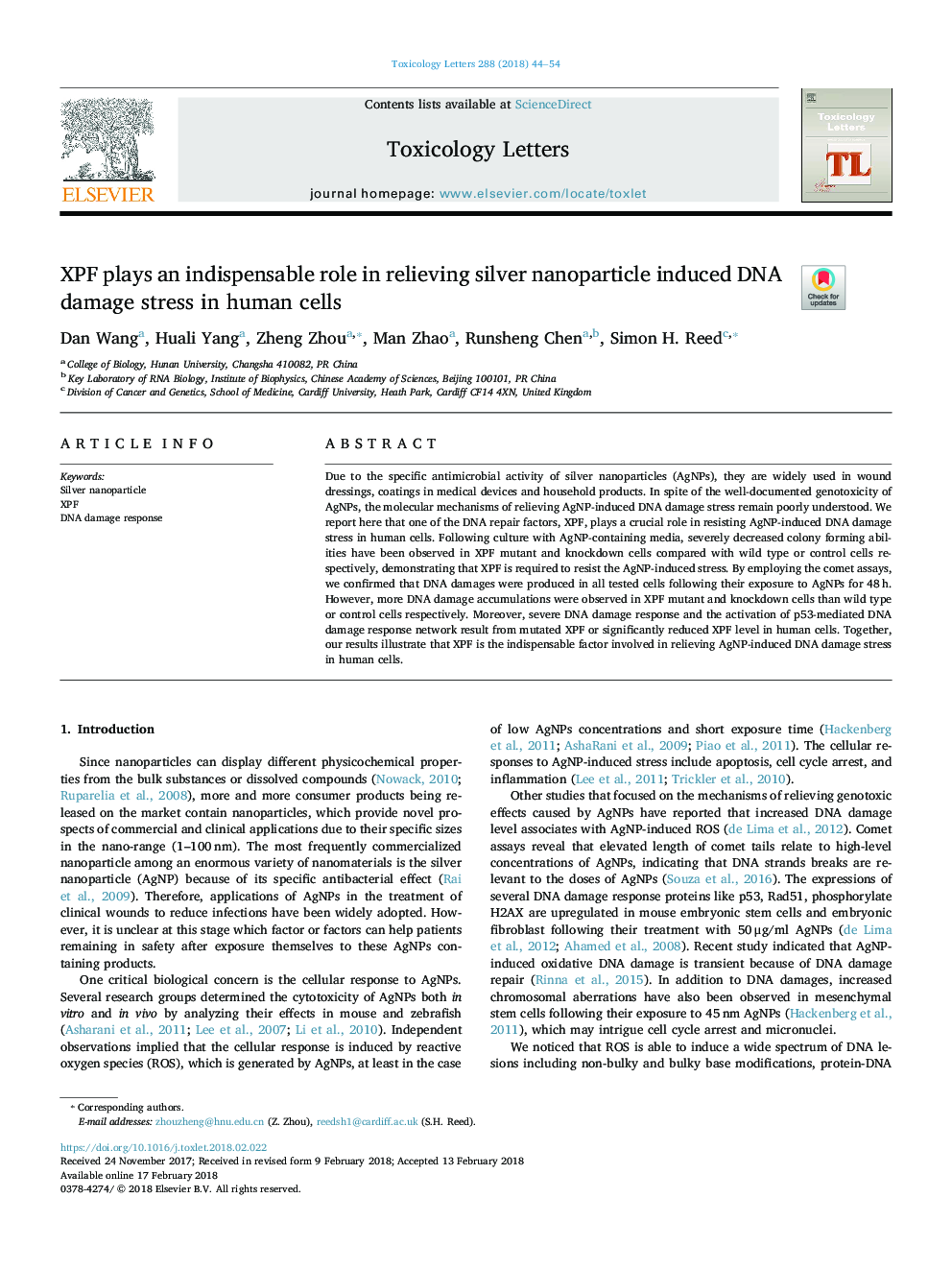| Article ID | Journal | Published Year | Pages | File Type |
|---|---|---|---|---|
| 8553339 | Toxicology Letters | 2018 | 11 Pages |
Abstract
Due to the specific antimicrobial activity of silver nanoparticles (AgNPs), they are widely used in wound dressings, coatings in medical devices and household products. In spite of the well-documented genotoxicity of AgNPs, the molecular mechanisms of relieving AgNP-induced DNA damage stress remain poorly understood. We report here that one of the DNA repair factors, XPF, plays a crucial role in resisting AgNP-induced DNA damage stress in human cells. Following culture with AgNP-containing media, severely decreased colony forming abilities have been observed in XPF mutant and knockdown cells compared with wild type or control cells respectively, demonstrating that XPF is required to resist the AgNP-induced stress. By employing the comet assays, we confirmed that DNA damages were produced in all tested cells following their exposure to AgNPs for 48â¯h. However, more DNA damage accumulations were observed in XPF mutant and knockdown cells than wild type or control cells respectively. Moreover, severe DNA damage response and the activation of p53-mediated DNA damage response network result from mutated XPF or significantly reduced XPF level in human cells. Together, our results illustrate that XPF is the indispensable factor involved in relieving AgNP-induced DNA damage stress in human cells.
Related Topics
Life Sciences
Environmental Science
Health, Toxicology and Mutagenesis
Authors
Dan Wang, Huali Yang, Zheng Zhou, Man Zhao, Runsheng Chen, Simon H. Reed,
